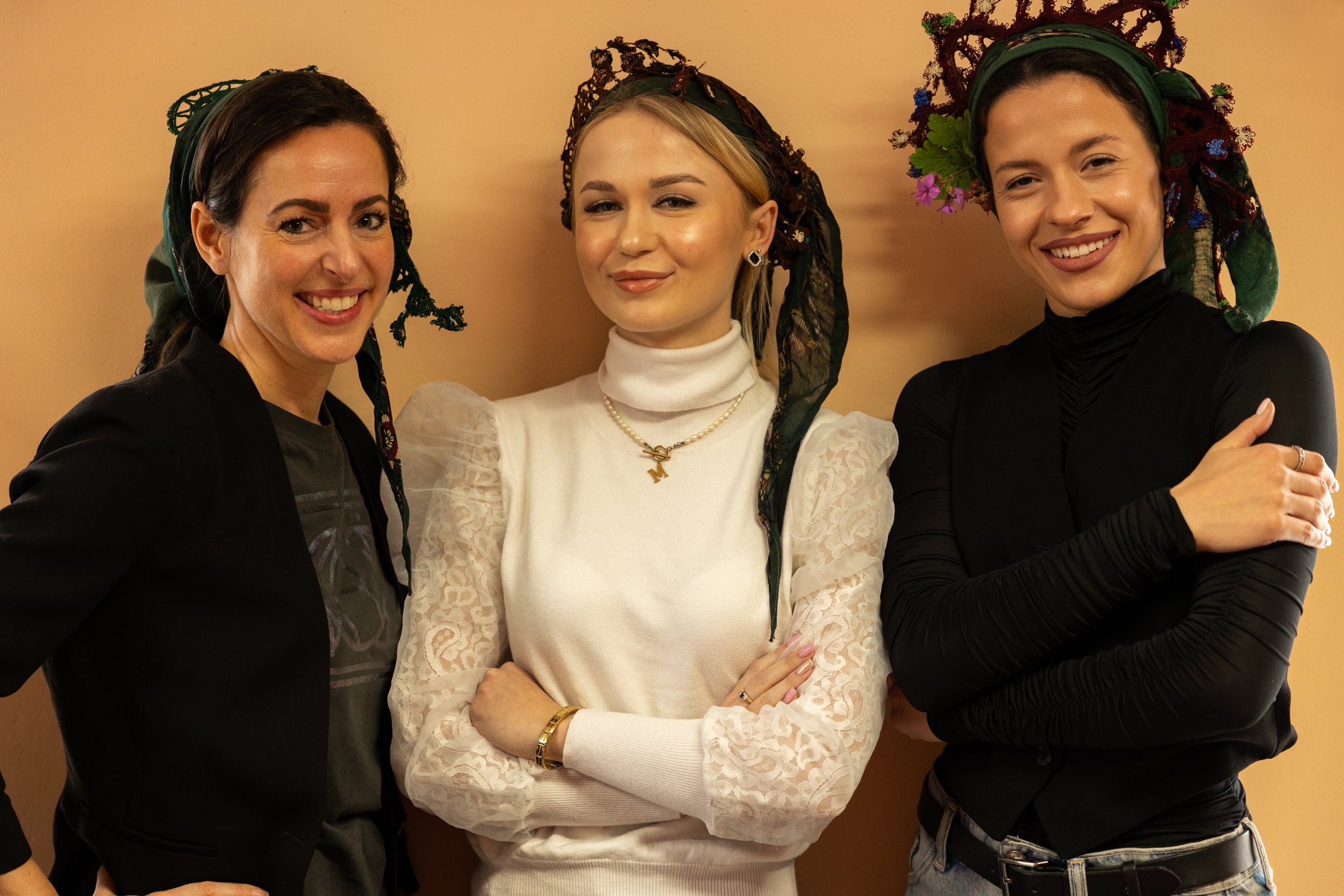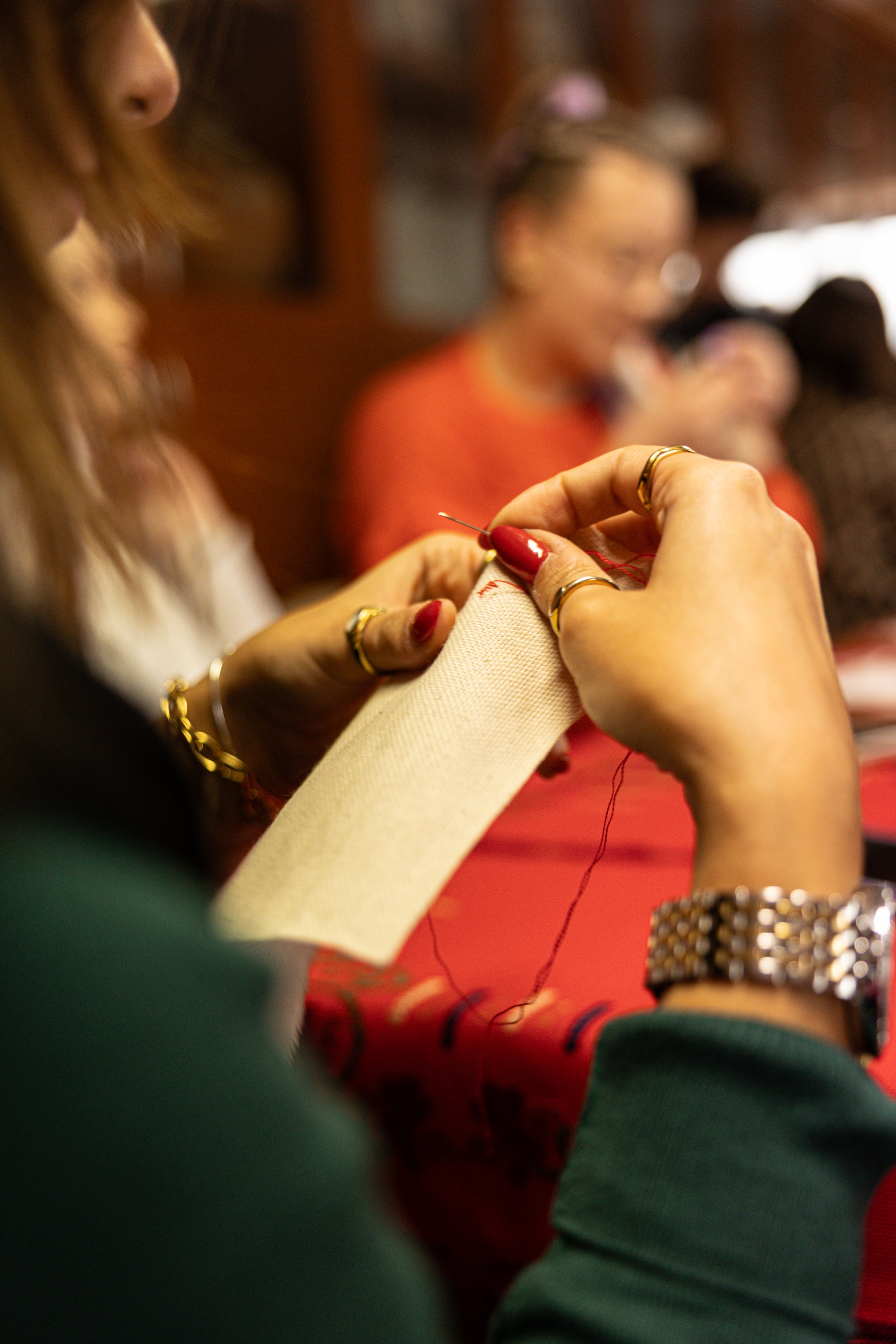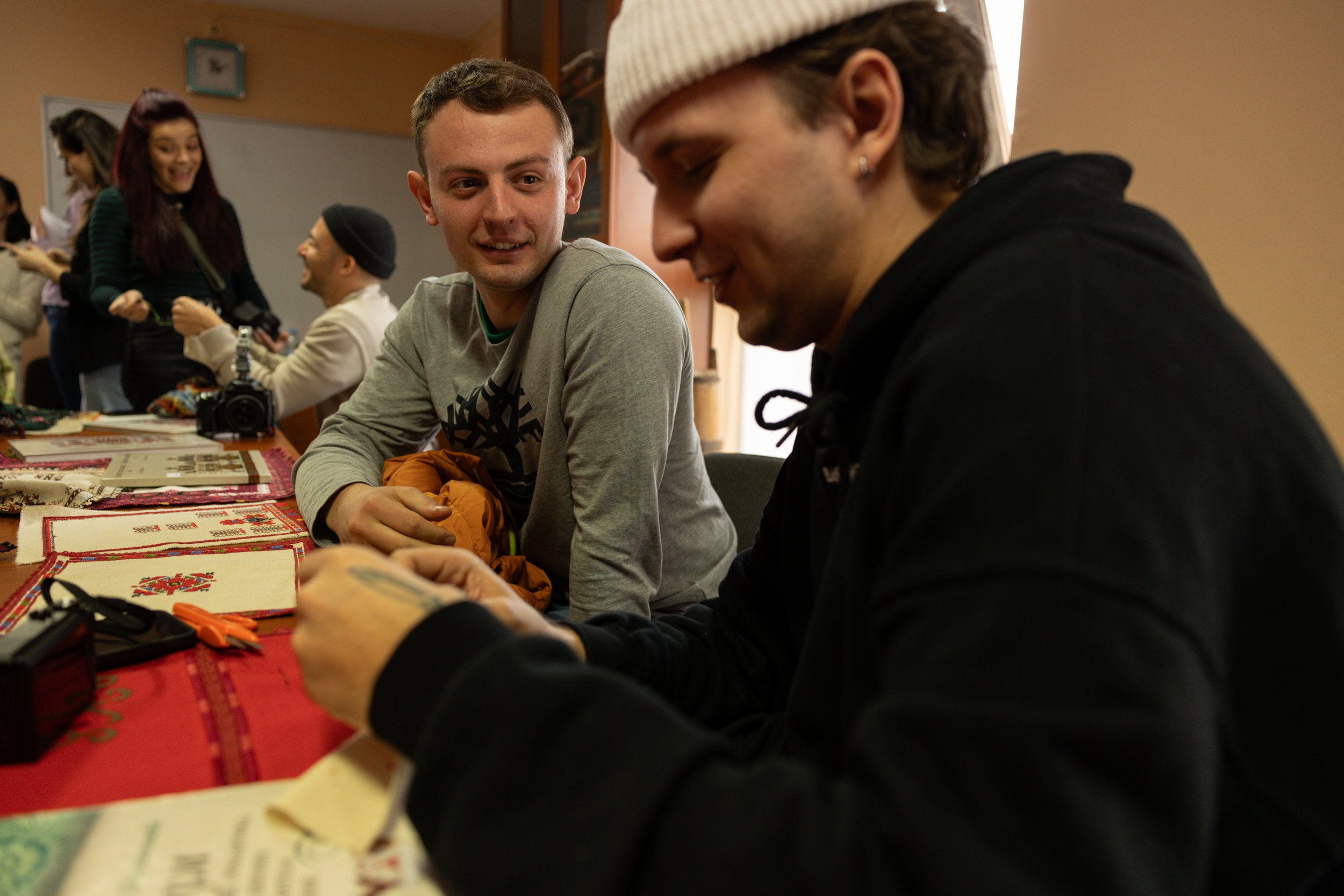Bulgarian National Embroidery - “MuzAtelie” cultural information and creative room for preservation, development and popularization of cultural heritage and Bulgarian crafts in Trud village, Bulgaria
In 2020, the Community Center "Svetlina - 1929" in the village of Trud, with representative Ivanka Ikonomova, launched the implementation of the project "MuzAtelier - a cultural information and creative space", financed under the Rural Development Program. The main goal of the project is to preserve and popularize the cultural heritage in the village in a modern and attractive way, enriching the knowledge and sparking the interest of children, youth, parents, residents of Trud village, guests from the Maritsa municipality, and beyond.
The project envisages conducting research, which includes the study and collection of material and non-material values and facts, stories, legends about local crafts, specifically about the embroidered lace "kene", as well as their influence on customs, traditions, clothing, and folklore in the village and the Maritsa municipality.
Project initiator Katya Koleva: “The team of this cultural house in Trud, a village from the Maritza municipality, decided to revive this very special kind of lace embroidery. It is used for the decoration and finishing of scarfs, sleeves, shirts and underwear, as well as for tablecloths and pillowcases. To hold the shape, we used to do this with horsehair, but there is no more horsehair available and the technology to manipulate the hair is non-existent.” Fortunately, a lot of people in our town are interested in renewing this tradition. Two women, Yanka Konstantinova and Maria Andonova were appointed to pass on their learnings to the other women who are now coming together every week to embroider and make pieces with “kene” – they are experts. The kene technique, based on knots, is more than a century old and the scarfs are still very popular amongst traditional Bulgarian dancers and singers.”

Few outside the close circle of craftswomen, ethnographers, and museum curators know that under this name is known one of the finest and most exquisite types of Bulgarian embroidered lace. It is made with a regular needle and thin cotton or silk thread. The technique is ancient, widespread in the Mediterranean region, and introduced to Bulgarian lands from the East as early as the early Renaissance. According to Yanka Konstantinova, an 83-year-old woman from the village of Trud and the leader of the "Bulgarka" club at the community center, during the Turkish slavery, merchants traveling abroad to India and other countries would bring gifts to their wives. This is how lace was brought to Bulgaria. Kene is widespread in the clothing and lifestyle not only of Bulgarians – Christians but also of Turks, Greeks, Armenians, and others. In Plovdiv, it is most widespread among the Armenian community.
The craft disappeared slowly because of the emancipation of women. Kene-expert Maria Andonova (75) has a childhood memory from when she was 8 years old. After the work was done, the women didn’t get their afternoon rest, but they did kene. “I was observing them and felt a passion for kene. When I embroider, I forget everything. It is like meditation. It is also something I can give to the next generations. This was something we learned from our grandmothers and it is our responsibility to keep traditions alive.”
In the little village Trud, where the cultural house is situated, is according to the women perfect for working people, but for retired people there is not so much to do. So retired women find a new purpose now. The social factor of learning kene is very strong. They learn from each other’s perspective of life.























